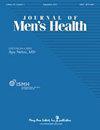HPV vaccination among gay, bisexual and other men who have sex with men in Canada's three largest cities: a person-centred approach
IF 0.6
4区 医学
Q4 Medicine
引用次数: 0
Abstract
Starting in 2015, many Canadian provinces and territories introduced publicly-funded human papillomavirus (HPV) vaccination programs targeted to gay, bisexual and other men who have sex with men (GBM) 9–26 years old. Using baseline data from the Engage study, a sexual health study of GBM from three Canadian cities, we explored how social and programmatic factors intersect and affect stages of HPV vaccination (Stage 1: unaware of HPV vaccine, Stage 2: undecided/unwilling to get vaccinated, Stage 3: willing to get vaccinated, Stage 4: vaccinated with at least one dose). First, by city, we created subgroups of GBM ≤26 years old (N Vancouver = 178; Toronto = 123; Montreal = 249) using latent class analysis. Next, by latent class, we estimated the probability of being in the four HPV vaccination stages using the Bolck, Croon and Hagenaar method. Latent class membership was associated with HPV vaccination stage in Vancouver (p = 0.003) and Montreal (p = 0.048) but not Toronto (p = 0.642). In Vancouver and Montreal, membership in the “no barriers” latent class had the highest probability of vaccination (56–58%). In Vancouver, the “racialized, GBM privacy, immigration and healthcare access barriers” class had a 75% probability of being vaccine unaware. In Montreal, the “immigration and past vaccines barriers” and “socio-economic, GBM privacy and healthcare access barriers” classes had the highest probabilities of being vaccine unaware (43% and 46%) and of being undecided or unwilling to get vaccinated (40% and 25%). In conclusion, our person-centred findings suggest tailored interventions by locale may help to increase HPV vaccine uptake among GBM in Canada’s three largest cities.在加拿大三个最大城市的男同性恋者、双性恋者和其他男男性行为者中接种HPV疫苗:以人为本的方法
从2015年开始,加拿大许多省份和地区引入了公共资助的人类乳头瘤病毒(HPV)疫苗接种项目,目标人群是9-26岁的男同性恋、双性恋和其他男男性行为者(GBM)。使用Engage研究(一项来自加拿大三个城市的GBM性健康研究)的基线数据,我们探讨了社会和规划因素如何交叉并影响HPV疫苗接种阶段(第一阶段:不知道HPV疫苗,第二阶段:未决定/不愿接种疫苗,第三阶段:愿意接种疫苗,第四阶段:至少接种一剂疫苗)。首先,按城市划分,我们使用潜在类分析创建GBM≤26岁的亚组(温哥华= 178;多伦多= 123;蒙特利尔= 249)。接下来,根据潜在类别,我们使用Bolck, Croon和Hagenaar方法估计处于四个HPV疫苗接种阶段的概率。温哥华(p = 0.003)和蒙特利尔(p = 0.048)的潜在类别成员与HPV疫苗接种阶段相关,但多伦多(p = 0.642)无关。在温哥华和蒙特利尔,“无障碍”潜在类别的成员接种疫苗的概率最高(56-58%)。在温哥华,“种族化、GBM隐私、移民和医疗保健准入障碍”阶层有75%的可能性不知道疫苗。在蒙特利尔,“移民和过去的疫苗障碍”和“社会经济、性别歧视隐私和医疗保健准入障碍”类别的人不知道疫苗的概率最高(43%和46%),不决定或不愿接种疫苗的概率最高(40%和25%)。总之,我们以人为中心的研究结果表明,根据地区进行量身定制的干预可能有助于增加加拿大三个最大城市GBM中HPV疫苗的吸收率。
本文章由计算机程序翻译,如有差异,请以英文原文为准。
求助全文
约1分钟内获得全文
求助全文
来源期刊

Journal of Men's Health
Medicine-Urology
CiteScore
0.70
自引率
28.60%
发文量
153
审稿时长
10 weeks
期刊介绍:
JOMH is an international, peer-reviewed, open access journal. JOMH publishes cutting-edge advances in a wide range of diseases and conditions, including diagnostic procedures, therapeutic management strategies, and innovative clinical research in gender-based biology. It also addresses sexual disparities in health, life expectancy, lifestyle and behaviors and so on. Scientists are encouraged to publish their experimental, theoretical, and descriptive studies and observations in as much detail as possible.
 求助内容:
求助内容: 应助结果提醒方式:
应助结果提醒方式:


